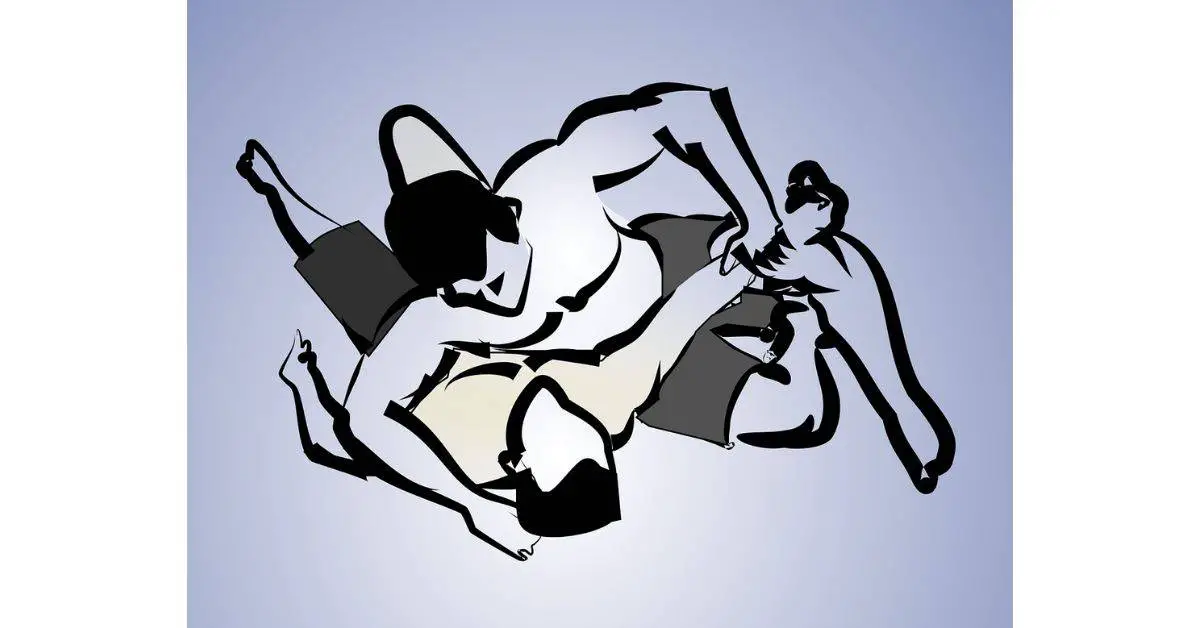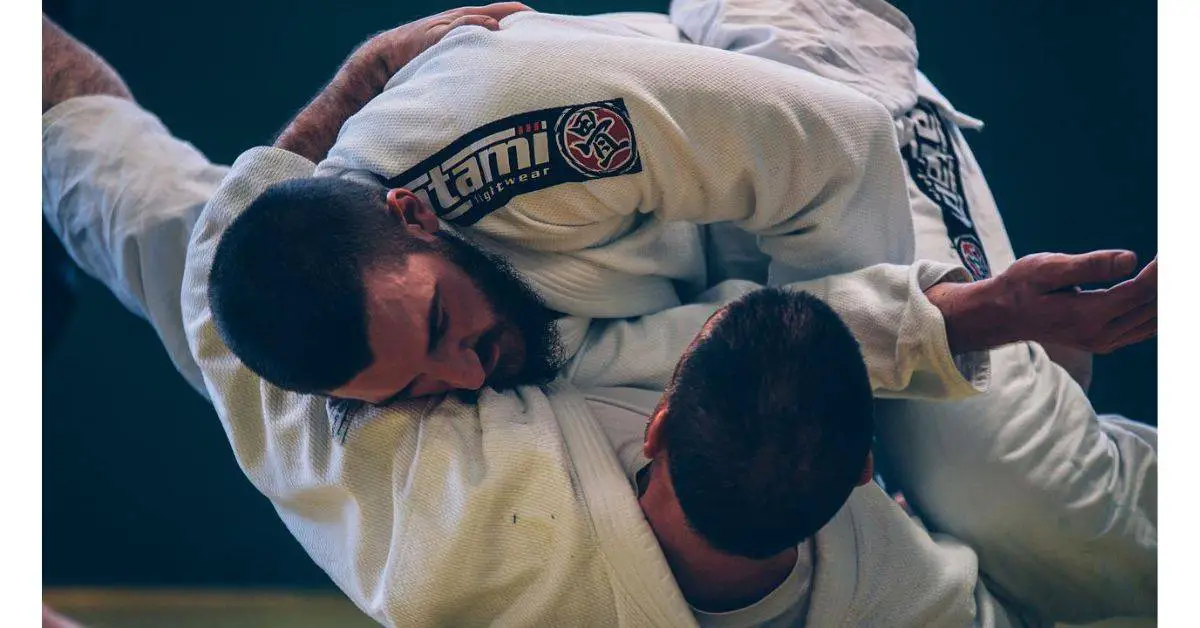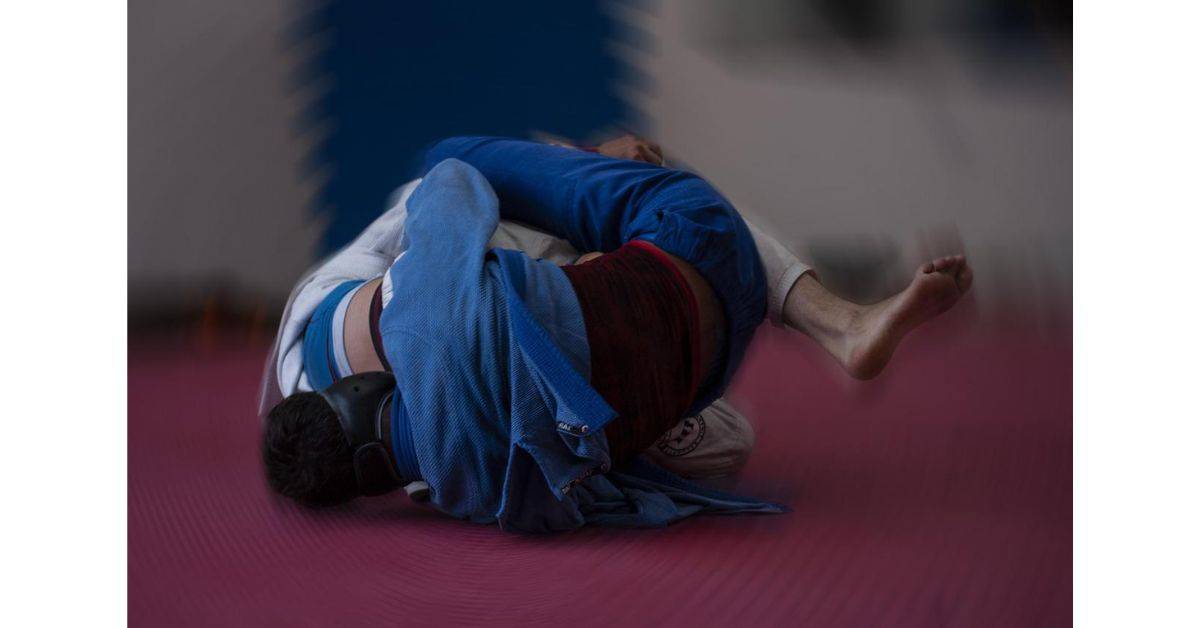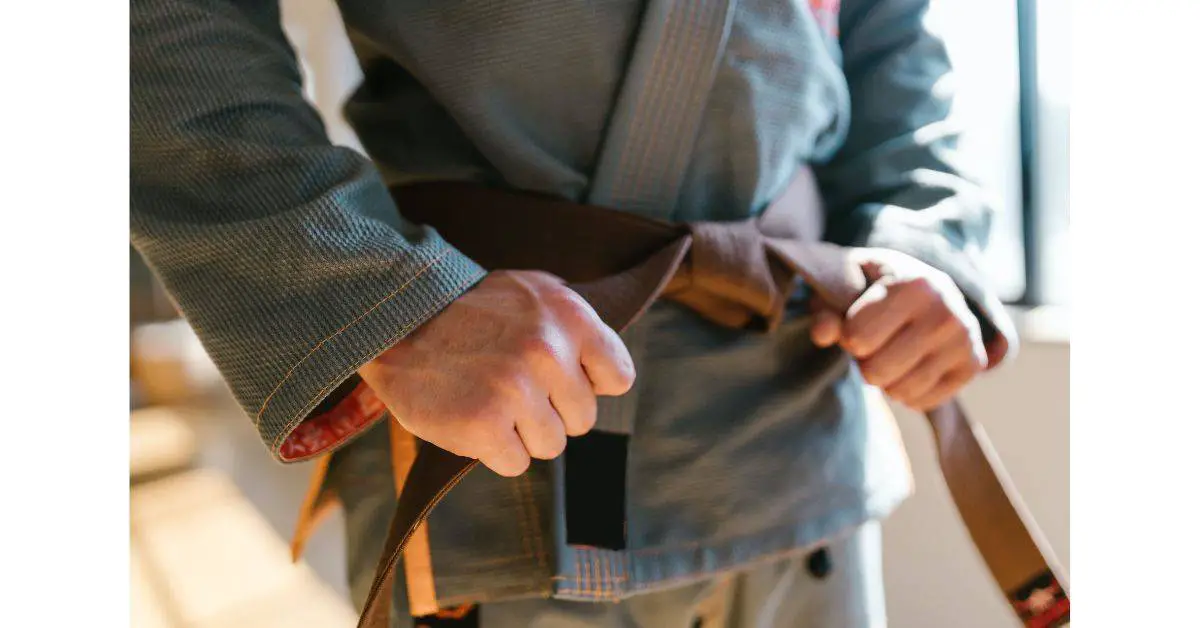The debate on who will win a fight between a bodybuilder and a BJJ trainee has recently been ongoing. Looking at the homogeneity and difference between the two will be instrumental in reaching a viable conclusion, as will be done in this article.
A BJJ trainee will effortlessly defeat a bodybuilder regardless of the disparity in weight and size; this is because BJJ is a martial art that teaches trainees to overpower huge opponents. BJJ training emphasizes technique; therefore, size is not a prerequisite.
What is BJJ?
BJJ is a form of martial arts. Likewise, Brazilian Jiu-Jitsu is a combat sport and a self-defense martial art based on submission holds, grappling, and ground combat. Its teachings are highly effective because everyone can use them, regardless of weight and size.
BJJ was developed in 1920 by the Gracie family who studied kodokan then formed their own self-defense system, formerly known as Gracie Jiu-jitsu.

BJJ builds its concept around Japanese Jiu-Jitsu, which states that a smaller person subdues a colossal person in terms of size using weight distribution and leverage. BJJ trains the student to take the combat to the ground and use multiple submissions and holds to champion the battle.
Training educates the trainee on how to take control of one’s opponent and gain dominance over them using techniques that will push them into yielding through choke holds and submissions.
What is Bodybuilding?
Bodybuilding is an exercise that is professionally performed in events. Likewise, it is an activity that involves resistance exercises to develop the body through muscle hypertrophy to improve the physique. It emphasizes physical aesthetics more than strength.
Professional bodybuilding ranks using the following features: size, symmetry, conditioning, muscularity, stage presentation, and posing. Every competitor performs a sequence of poses to present their physique to a panel of judges.

Preparation activities for Bodybuilding include losing weight, a compound intracellular carbon loading and dehydration to achieve muscle definition and vascularity. To highlight the contrast of the skin, bodybuilding competitors get a tan and shave.
In Bodybuilding, it takes a significant time to attain the desired physique, therefore; some bodybuilders opt to take performance-enhancing drugs and anabolic steroids
Differences between BJJ and Bodybuilding
As you can imagine, BJJ and bodybuilding are extremely different. While one is a martial art, another is a lifestyle and a fitness goal.
Because of that, we’ll compare the two, so we’ll be able to differentiate between them. Eventually, if you want to choose which you’ll learn, it’ll be best if you read and understand the following differences.
#1 – Bodybuilding is a lifestyle, while BJJ is a martial art
BJJ is a martial art that focuses on grappling techniques to overpower one’s opponent, while Bodybuilding is an exercise that involves resistance workouts to build muscle mass.
Through the practices, innovations, and adaptation of the Gracie Jiu-Jitsu and judo, BJJ is now a combat sport. Modern Martial art (MMA) incorporated BJJ as a real martial art. Indeed, it is a sport and a form of self-defense.
On BJJ as a sport, governing bodies such as the International Brazilian Jiu-Jitsu Federation standardize the rules and regulations practitioners follow worldwide and set standards to follow in competitions. Likewise, it has a belt ranking system to portray advancing in various levels.

Bodybuilding is a workout that increases body mass through resistance training. The former is also a sport practiced professionally and focused on muscle definition to create a body aesthetic.
Bodybuilding developed in the 19th century, and Eugene Sandow promoted it in England.
While judging bodybuilding competitions, the competitors perform a sequence of poses: side triceps, side chest, double back biceps, and double front biceps—muscular thighs and abdomen. Competitors demonstrate a choreographed drill to display their physique. A pose down takes place after each round, as the judges make their scores.
#2 – BJJ and Bodybuilding have different training methods.
Every martial art or sport has a specific training regime that brings out the best in its students.
BJJ training concentrates on drilling, sparring, and submissions as the essential parts of training, while Bodybuilding focuses on bulking, cutting, weight training, nutrition, and performance-enhancing products. As a result, the BJJ trainee will be a more competent fighter.
BJJ training enables the students to practice at optimum speed and strength, as it mimics real competition. Its drills involve the performance of techniques on non-resisting and resisting opponents.
BJJ involves full contact sparring where the student tries overpowering their opponent through technique. Isolation sparring involves the students engaging in sparring but using only a specific series of scenarios.
The Gracie family focuses on practical self-defense skills and even entailed an exercise where one student receives attacks from all angles while in a circle and uses a technique to defend themselves.
Bodybuilding training focuses on building body mass throughout the year, and 12-14 weeks from competition, the bodybuilder should lose fat to preserve muscle. The bulking phase requires the bodybuilder to remain in a calorie surplus.
Bodybuilders engaging in weight training cause the muscles to tear, thus leading to muscle growth. Bodybuilders eat a specialized diet that involves carbohydrates, protein, and dietary supplements while training.
They also consume performance-enhancing products to increase muscle hypertrophy during training.
Similarities between BJJ and Bodybuilding
#1 – Both BJJ and Bodybuilding have strength training workouts.
BJJ incorporates strength training with exercises such as squats, deadlifts, bench presses, barbell rows, and overhead presses. Bodybuilding also has strength training exercises such as squats, deadlifts, power cleaners, barbell bench presses, and pull-ups.
In BJJ training, squats are effective for developing leg strength that can help one stay on guard and exert more control over their opponent. Deadlifts strengthen the glutes, lower back hamstrings, and spine, which helps in takedowns and maintaining guard.
Bench press strengthens the upper body, that is, the chest, triceps, and shoulders, that can help to frame around your opponent. Barbell rows build strength in the upper back and are helpful with BJJ generally. Pull-ups build strength in the upper back, lats, and grip strength that helps one attain a compact position. The Overhead press strengthens the triceps and shoulders to enable one to frame against one’s rival on side control.
In Bodybuilding, squats exercise most muscle groups and, if used with weights, can lead to building muscle mass. Deadlifts strengthen the lower body muscles. The power clean works the lower legs, gluteals, deltoids, and upper back. Pull-ups aid in back development. The bench press works the pectorals.
#2 – Both BJJ and Bodybuilding are good exercises for building muscle mass
BJJ and Bodybuilding are excellent workouts for building muscle mass if combined with nutrition and proper muscle recovery.
BJJ is a full-body workout that works all major muscle groups: the lower torso, upper torso, and core. Engaging in its training activates hypertrophy, leading to muscle growth.
A study conducted on the effects of BJJ training sessions on psychological, hormonal, biochemical and perceptive responses. (Science of martial arts)
BJJ training increases the catabolic form and generates the damage to cells, which do not return to basal levels after 24hrs since training. After a solid martial art workout, it can predict the glycolysis pathway and cause cardiovascular activation.
Proper nutrition is paramount in BJJ, as it provides the body with the nutrients necessary for muscle repair. Muscle recovery is incredibly beneficial as it facilitates muscle repair.
Here’s how to eat properly to remain healthy. I encourage you to read it to ensure you know how to involve proper nutrition in your life.
In Bodybuilding, bulking and cutting is easy, but requires high discipline to do the workouts without fail. Likewise, it emphasizes having proper nutrition and balanced diets. Moreover, bodybuilders use dietary supplements to increase muscle size.
Who will win a fight, a BJJ trainee or a Bodybuilder?
A BJJ trainee will win a fight over a bodybuilder any day, as it combines strength and technique instead of Bodybuilding, which only focuses on size. BJJ teaches students how to bring down huge rivals regardless of their size, which will help against a bodybuilder.
BJJ has many techniques, including the ‘pulling guard’ that involves several moves to manipulate the rival into a state of submission. Actualizing a dominant position on the ground is an emblem of BJJ that uses the guard position to defend one from the bottom, to dominate the guard against the upper class with back mount, side control, and mount.

Bodybuilding, on the other hand, focuses on strength and body physique. Likewise, it does not teach fighting techniques but relies on body mass and muscle. It is an exercise and a lifestyle that enables one to gain muscle mass through resistance training; thus, it is not conducive to fights.
Should I do BJJ or Bodybuilding?
Whether to take up BJJ or Bodybuilding is dependent on many factors exclusively known by the student.
If you’re looking to increase your muscle size without learning to fight, consider bodybuilding. Nonetheless, if you want to learn how to fight fiercely and aggressively, it’ll be best to choose a martial art, such as Brazilian Jiu-Jitsu. Still, you can decide whichever martial art you desire to learn.
BJJ can get one in shape; it is an intense full-body workout that can burn 700-1000, calories per session; therefore, it is efficient for weight loss. It is a full-body workout that exercises the main muscle groups: upper body, lower body, and core muscles. The former is good cardio that improves the body’s physique.
BJJ training burns 1200 calories depending on the intensity and frequency of the training. It is brought about by grappling, rolling, drilling, and stretching exercises. However, subject to variables such as physical size: height, sex, age, and weight.
It encourages healthy living and discourages poor eating habits. Practicing BJJ reduces eating habits that increase calorie intake.

Integrating BJJ training with proper nutrition and muscle recovery can lead to the building of muscle. BJJ exercises work the main muscle groups: the upper torso, core, and lower torso muscles. Hypertrophy, the formation of muscle fibres, is activated by BJJ training. Muscle recovery is essential to facilitate muscle repair.
BJJ teaches practical self-defense skills that are efficient when handling a life-threatening situation. BJJ has a belt ranking system as a tangible reward.
Bodybuilding only offers physical rewards such as being in shape, muscle definition, and mental health benefits.
Can I train in BJJ while Bodybuilding?
An individual may want to pursue both BJJ and Bodybuilding simultaneously. For instance, a person might not desire to focus intensively; however, all the same, the individual still aims at gaining muscle while undertaking BJJ at the same time. Is this venture possible?
Training in Brazilian Jiu-Jitsu and bodybuilding at the same time—is, indeed, possible. However, reaching a state of overtraining can be rather easy while practicing both. For example, if you train BJJ on Sunday and then lift weights on Monday, you may put yourself at immense risk for overtraining.
Here are the symptoms of overtraining, according to a study: (Source)
- Prolonged general fatigue.
- Increase in tension, depression, anger or confusion.
- Inability to relax.
- Poor-quality sleep.
- Lack of energy, decreased motivation, moodiness.
- Not feeling joy from things that were once enjoyable.
One has to choose one of them. So, between BJJ and Bodybuilding, which one has the most to offer a trainee?
BJJ is the better option because there are specific steps a practitioner can take to that deep-rooted growth of muscle while eliminating the likelihood of stagnation or injury. However, undertaking BJJ while expecting massive and rapid outcomes is discouraged. The journey may be long, but it is worth it.
Initially, the most recommended path for a person seeking to grow muscles while taking up BJJ simultaneously will be to adhere to a strength training schedule. One is encouraged to concentrate on compound lifts, such as push-ups, pull-ups, bench, overhead presses, squats, deadlifts, etc.
Additionally, a person should partake in training schemes, for instance, 5-3-1 and 5×5. Each of the routines mentioned above favors strength enhancement that will add to the betterment of BJJ and fewer injuries.
Subsequently, a practitioner must look out for the volume taken at the gym. When one overindulges in the reps and sets done, that person is likely to become too exhausted, which will take a toll on BJJ. Thus, one must always aim to find a balance that will facilitate garnering a reasonable pump.
All in all, BJJ trumps Bodybuilding. For anyone intending on venturing into both sports, let the earlier mentioned regimen serve as a well-elaborated roadmap to gaining the most out of BJJ and muscle growth.
However, it is imperative to note that resting and eating well are also building blocks of both BJJ and muscle growth. Therefore, practitioners should remember to have plenty of rest and eat a significant amount of food because there is no substitute for either.
Final Words
BJJ is a weaponless martial art that uses grappling and ground methods to defeat your opponent. On the other hand, Bodybuilding is a lifestyle that dictates of increasing one’s muscle mass and losing body fat. Indeed, it’s a fitness journey.
A BJJ trainee will emerge as the winner in a fight with a bodybuilder because it teaches practical techniques to help students protect themselves against adversaries. Compared to Bodybuilding, BJJ is so much better to learn as it provides the ability to return a fight!
After understanding Bodybuilding and BJJ, the student can select what best works for them in terms of purpose and effectiveness. Sign up for the next class and be a testimony of the benefits it renders.
If you want to save money by doing BJJ at your home, follow the link to an article of mine on the topic.

